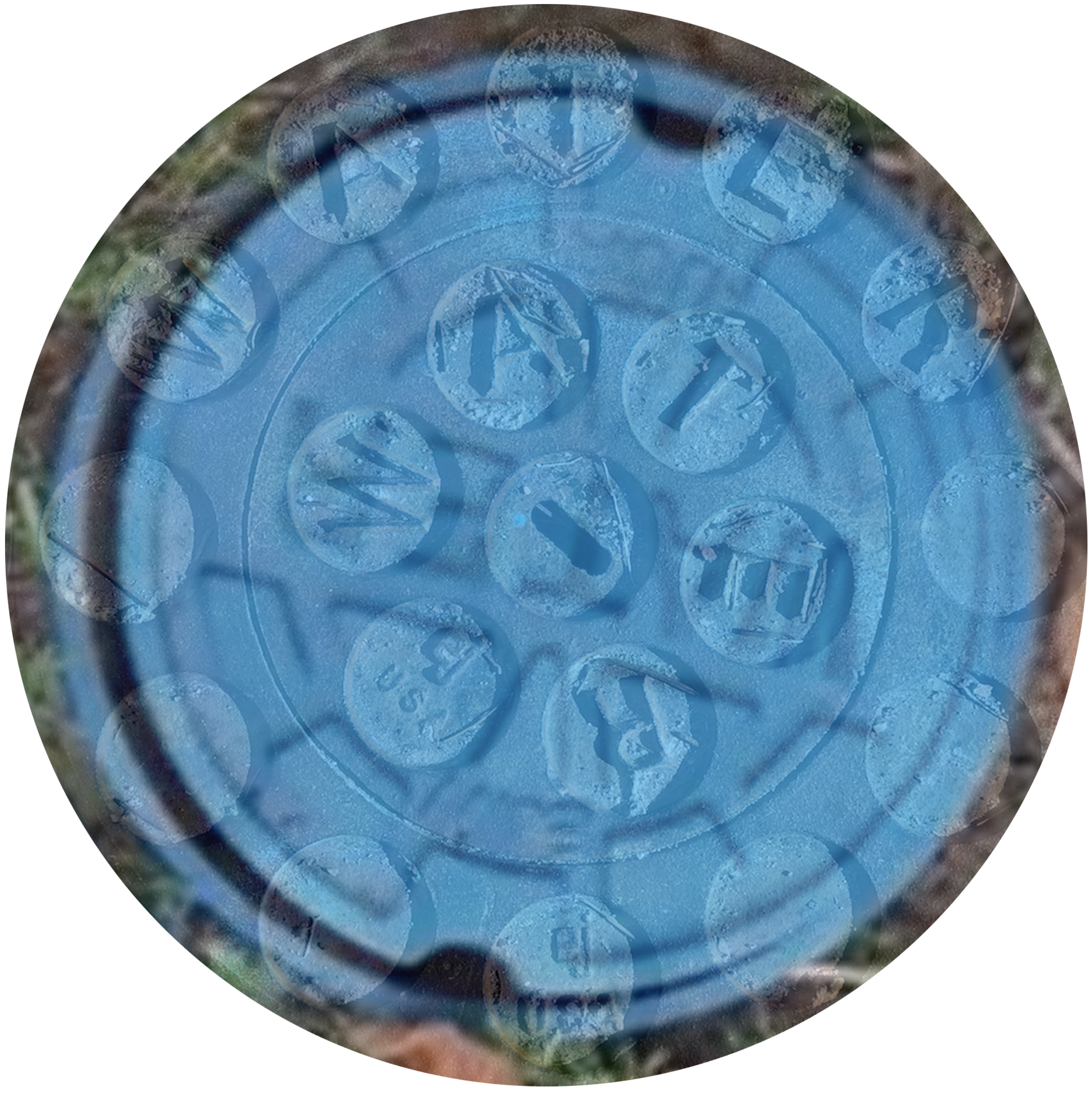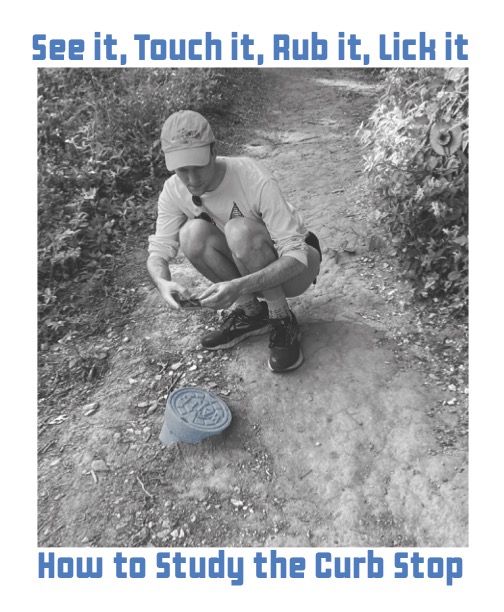
Cur(b)-plop
by ALEXANDRA LAKIND, RO(B) LUNDBERG, NINA VROEMEN, and AARON WALKER
Since Reconsidering the Aqueduct (see Viral Ecologies issue 2), we have been looking for infrasculptures in our daily lives -- spotting markers and monuments to systems that facilitate the movement of materials and ideas. We focused largely on the curb stop: the small access point embedded in sidewalks and lawns to turn water pipes on and off. Curb stops mark the division between public and private ownership of pipes underground. These infrasculptures represent a clear yet porous manifestation of dominant US property regimes; the placement of the curb stop often doesn't match the property line on the surface. To further investigate the utilities and aesthetics of curb stops, we've been getting to know these objects, paying attention in a variety of ways.


Excerpts of risograph zine created for the 2022 DIY Methods conference
I kneel and lick the metal circle. I don’t think you’re supposed to lick the street. The metal might be too hot. Or, if it’s very cold, will my tongue stick? I’m worried about germs. I looked up a study of bacteria on 1061 public surfaces: it suggested handwashing not licking. But now I know what the curb stop tastes like.
Curb stops often contain lead. That's a problem when lead gets picked up by drinking water flowing through the pipes. We thought we'd pop open some curb stops and try to clean off the dust, the dirt, the loose pieces of lead.
We were never going to get them all clean. Water is fluid and adept at dissolving and carrying substances. Water mingles with contaminants. Luckily, around this time our very own Nina Vroemen proposed an exciting solution to reuse lead-laden water. IN-VEST refashions the lead found in Montreal’s drinking water as a shield to deflect radiation.

Dancing in my studio, I would walk to the end of the hallway to quench my thirst from a water dispenser filled with trucked in water from dwindling aquifers. The water in the building's pipes had been deemed undrinkable due to lead contaminants. With nuclear history in mind, it dawned on me that the contaminated water in the building could be repurposed as a shield to protect from the invisible threat of radiation.
Taking inspiration from the medical field, where lead aprons are used for X-rays, IN-VEST repurposes this idea to create speculative soft-sculpture; where the toxicity of the past is harnessed as a potential antidote for a livable future. Using a score where concepts, graphic design, music, and dance inform one another we continue to explore these infrasculptures together.